The new Mercedes Benz CLS
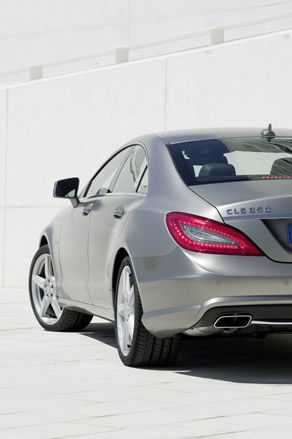
Mercedes-Benz made a clear statement when it launched the original CLS back in 2004. The four-door coupé, with its distinctive, almost banana-shaped profile, was a timely product decision for a marque, at the time, suffering from a conservative reputation. The CLS offered saloon-style comfort coupled with coupé-style youthfulness, and introduced a whole new market segment later copied by its rivals. With over 170,000 cars sold - many buyers new to the brand - Mercedes re-emerged as an innovative company with a spring in its step.
Mercedes invented the coupé back in 1934 with the 500K - arguably the template of inter-war automotive beauty. The first CLS vaguely referenced this, but the various design studies - Concept Fascination, F800 and Concept Shooting Break - leading up to this latest production car attempted a closer linkage. The F800, shown at Geneva earlier in the year, was particularly emotive with its Art Deco-inspired cabin, complete with light-coloured silky bendy oak that appeared almost untreated so as to reveal the natural grain.
The new CLS, unveiled at the Paris Motor Show earlier this month and recently driven on Tuscan roads, is an altogether more cautious proposition. It does nevertheless follow the distinct formal design language as showcased on the new E-Class that Mercedes is keen to explore.
The CLS designer Karlheinz Bauer - he also penned the original - says that the design had to move on. Too many of his competitors, he notes, have since created four-door coupés with that same distinctive swooping character line running across the profile. And, as attractive as this can make the sculpture, being originators of this segment, Mercedes simply had to break away.
'This is not an evolution but a new story.' he confides. 'The new line makes its own statement for a new design language.' Bauer kept the original pinched dynamic line, but intersected it dramatically with the highly prominent rear wheel arches that have been evolved from the E-Class coupé. The gamble paid off and on the road, in motion, this lends the car a sense of agility and the right degree of aggressiveness for such an executive coupé.
The face also takes many cues from the E-Class family. This represents a more assertive face for Mercedes dominated by a sculptured grille, which design director Gorden Wagener says 'melts in like an aeroplane wing to be smooth and sophisticated'.
The front-end also features high-performance headlights - Mercedes' Intelligent Light System fitted with bi-xenon headlamps in combination with the very latest LED technology that includes an incredible 17 lamps. As many as 37 engineers worked behind the scenes to make this all possible and the light design is almost a visual homage to the intensity of the technology and research that lies behind this jewelled façade.
Wallpaper* Newsletter
Receive our daily digest of inspiration, escapism and design stories from around the world direct to your inbox
Inside is sporty and executive looking with a finely developed appreciation of proportion and material. The driver interface has a pragmatic layout and the cabin is driver focused without entirely excluding the front passenger - the driver sitting cosily, visually almost cocooned thanks to the swooping wraparound dash.
The new CLS comes with a choice of three engines (two diesels and a petrol with a large capacity V8 to follow) all with ECO start/stop function as standard, which helps achieve the promise of an average of 25 per cent improved fuel consumption over its predecessor. The CLS also offers new electromechanical power steering and numerous safety features including lane keep assist and active blind spot assist.
Will it rock the automotive world? Possibly not. Then again the new CLS has been born into a very different world to its predecessor, a world where grandiose gestures are no longer acceptable and where luxury has an altogether more subtle definition.

This lends the car a sense of agility and the right degree of aggressiveness for such an executive coupé
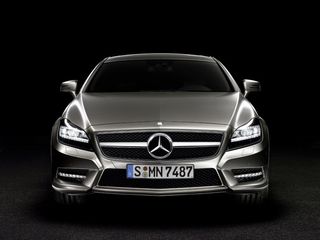
The face also takes many cues from the E-Class family. It is more assertive than is customary for Mercedes, dominated by a sculptured grille, which design director Gorden Wagener says 'melts in like an aeroplane wing to be smooth and sophisticated'
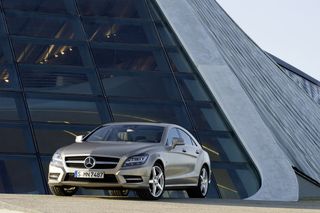
The front-end also features high-performance headlights - Mercedes' Intelligent Light System fitted with bi-xenon headlamps in combination with the very latest LED technology that includes an incredible 17 lamps
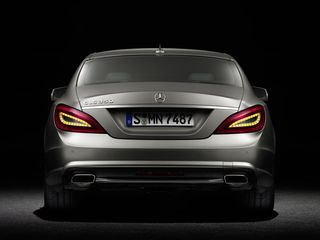
As many as 37 engineers worked behind the scenes to make this all possible and the light design is almost a visual homage to the intensity of the technology and research that lies behind this jewelled façade
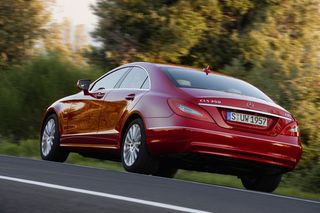
The new CLS comes with a choice of three engines (two diesels and a petrol with a large capacity V8 to follow) all with ECO start/stop function as standard, which helps achieve the promise of an average of 25 per cent improved fuel consumption over its predecessor
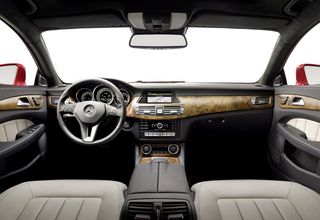
Inside is sporty and executive-looking with a finely developed appreciation of proportion and material
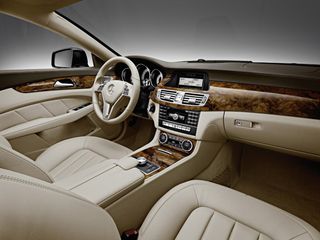
The driver interface has a pragmatic layout and the cabin is driver focused without entirely excluding the front passenger - the driver sitting cosily, visually almost cocooned thanks to the swooping wraparound dash
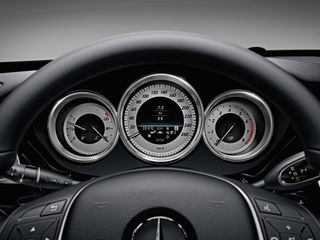
The CLS also offers new electromechanical power steering and numerous safety features including lane keep assist and active blind spot assist
-
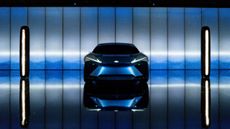 Lexus installation explores time at Milan Design Week 2024
Lexus installation explores time at Milan Design Week 2024Lexus brought designer Hideki Yoshimoto’s ‘Beyond the Horizon’ to Milan’s Art Point, part of its ongoing series of collaborations with Fuorisalone
By Nargess Shahmanesh Banks Published
-
 Cult 1960s boutique Granny Takes A Trip gets a sustainable reboot
Cult 1960s boutique Granny Takes A Trip gets a sustainable rebootFounded on King’s Road in 1966, ‘radically creative’ fashion store Granny Takes A Trip is being reimagined for a new generation. Dal Chodha takes a closer look
By Dal Chodha Published
-
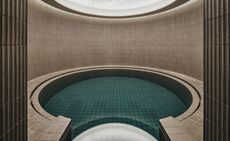 Find yourself at Six Senses Kyoto, the brand's breathtaking Japan debut
Find yourself at Six Senses Kyoto, the brand's breathtaking Japan debutSix Senses Kyoto opens its doors boasting tranquil, luxurious interiors by Blink Design Group
By Danielle Demetriou Published
-
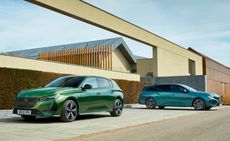 Peugeot’s sparky 308 gets hybrid power and handsome lines
Peugeot’s sparky 308 gets hybrid power and handsome linesThe Peugeot 308 proves that mass-market design needn’t be dull, blending hybrid power with sharp lines and excellent detailing
By Jonathan Bell Published
-
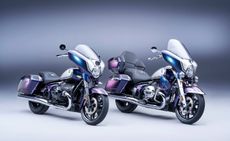 BMW Motorrad brings out the big guns for its newest cruisers
BMW Motorrad brings out the big guns for its newest cruisersBMW Motorrad R 18 Bagger and Transcontinental set the tone for high-voltage cruising with a brand collaboration with speaker specialist Marshall
By George Chapman Last updated
-
 Dacia’s new Manifesto concept is a true outdoor utility vehicle
Dacia’s new Manifesto concept is a true outdoor utility vehicleUtilitarian auto brand Dacia sets a bold new agenda with its Manifesto, a concept car pitched at the active outdoor market
By Jonathan Bell Last updated
-
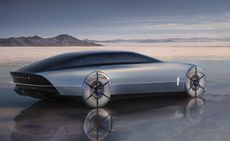 The sun sets on traditional supercars at California’s Monterey Car Week
The sun sets on traditional supercars at California’s Monterey Car WeekMonterey Car Week, the world’s most prestigious car gathering, is showcasing ever-more extravagant special editions, coachbuilt cars and all-new electric concepts. Here are seven key machines from 2022
By Rory FH Smith Last updated
-
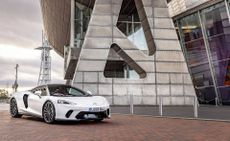 Is McLaren’s GT a sports car, a tourer, or the best of both?
Is McLaren’s GT a sports car, a tourer, or the best of both?The McLaren GT is a capable all-rounder dressed up in svelte supercar clothes. It might also be the last of its type
By Jonathan Bell Last updated
-
 Rolls-Royce puts the Phantom back on its lofty pedestal
Rolls-Royce puts the Phantom back on its lofty pedestalA mid-life refresh ensures the flagship Rolls-Royce Phantom Series II is at the top of its game, a last hurrah for traditional engines before an electrified future
By Jonathan Bell Published
-
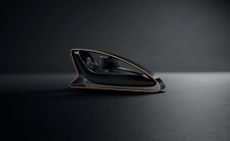 Prodrive’s new racing simulator is shaped by Callum to be front of the grid
Prodrive’s new racing simulator is shaped by Callum to be front of the gridThe racing simulator shapes up – this new design from Prodrive and Callum is honed for the high-end games room
By Jonathan Bell Last updated
-
 928 by Nardone Automotive: a restomod Porsche with Gallic verve and Italian style
928 by Nardone Automotive: a restomod Porsche with Gallic verve and Italian style928 by Nardone Automotive is a gracefully modernised version of Porsche’s endearingly different 928
By Jonathan Bell Last updated